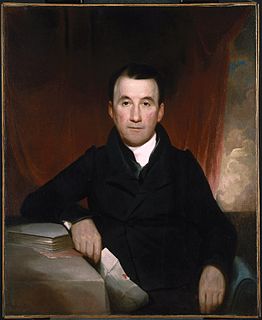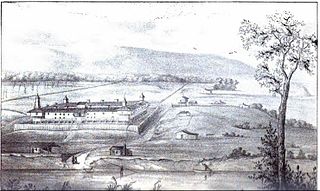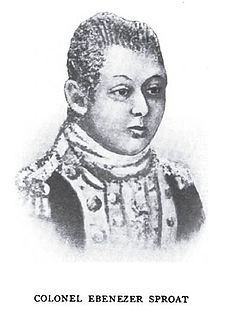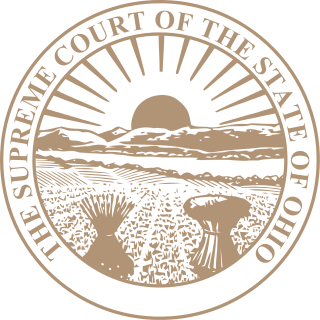
Benjamin Van Cleve (February 24, 1773 – November 29, 1821) was a pioneer settler of Dayton, Ohio in the United States. He held several offices in the town.

Dayton is the sixth-largest city in the state of Ohio and the county seat of Montgomery County. A small part of the city extends into Greene County. The 2017 U.S. census estimate put the city population at 140,371, while Greater Dayton was estimated to be at 803,416 residents. This makes Dayton the fourth-largest metropolitan area in Ohio and 63rd in the United States. Dayton is within Ohio's Miami Valley region, just north of Greater Cincinnati.
Contents
Benjamin Van Cleve was the oldest child of John and Catherine Benham Van Cleve of Monmouth County, New Jersey. Three siblings were born at Monmouth County in the 1770s. Two other siblings were born when the family lived in Washington County, Pennsylvania in the 1780s. The family moved west and arrived at Cincinnati, Northwest Territory on January 3, 1790. [1]

Monmouth County is a county located in Central New Jersey, in the United States within the New York metropolitan area, and the northernmost county along the Jersey Shore. As of the 2017 Census estimate, the county's population was 626,351, making it the state's fifth-most populous county, representing a decrease of 0.6% from the 2010 Census, when the population was enumerated at 630,380, in turn an increase of 15,079 from 615,301 at the 2000 Census. As of 2010, the county fell to the fifth-most populous county in the state, having been surpassed by Hudson County. Its county seat is Freehold Borough. The most populous place was Middletown Township, with 66,522 residents at the time of the 2010 Census, while Howell Township covered 61.21 square miles (158.5 km2), the largest total area of any municipality.

Washington County is a county located in the U.S. state of Pennsylvania. As of the 2010 census, the population was 207,820. Its county seat is Washington. The county was created on March 28, 1781, from part of Westmoreland County. The city and county were both named after American Revolutionary War leader George Washington, who eventually became the first President of the United States.

The Northwest Territory in the United States was formed after the American Revolutionary War, and was known formally as the Territory Northwest of the River Ohio. It was the initial post-colonial Territory of the United States and encompassed most of pre-war British colonial territory west of the Appalachian mountains north of the Ohio River. It included all the land west of Pennsylvania, northwest of the Ohio River and east of the Mississippi River below the Great Lakes. It spanned all or large parts of six eventual U.S. States. It was created as a Territory by the Northwest Ordinance July 13, 1787, reduced to Ohio, eastern Michigan and a sliver of southeastern Indiana with the formation of Indiana Territory July 4, 1800, and ceased to exist March 1, 1803, when the southeastern portion of the territory was admitted to the Union as the state of Ohio, and the remainder attached to Indiana Territory.
In Cincinnati, John Van Cleve was a blacksmith and farmed, until 1791, when he was killed outside Cincinnati by Native Indians. Mrs. Van Cleve married again, and had two more children before moving to Dayton. Benjamin Van Cleve was employed by his uncle Capt. Robert Benham between 1791 and 1794 during the Northwest Indian War. As part of his duties, he escorted pack horses to Arthur St. Clair's army, and witnessed his defeat. [1]

The indigenous peoples of the Americas are the Pre-Columbian peoples of North, Central and South America and their descendants.
Captain Robert Benham, was a frontier pioneer, served in local government and was a member of the first elected legislature for the State in Ohio, 1799 & 1800.
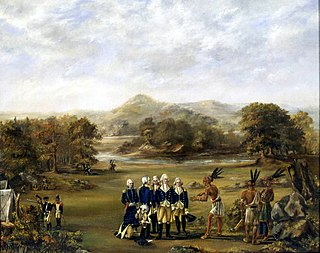
The Northwest Indian War (1785–1795), also known as the Ohio War, Little Turtle's War, and by other names, was a war between the United States and a confederation of numerous Native American tribes, with support from the British, for control of the Northwest Territory. It followed centuries of conflict over this territory, first among Native American tribes, and then with the added shifting alliances among the tribes and the European powers of France and Great Britain, and their colonials.
Van Cleve was present when Colonel Ludlow surveyed Dayton, and was one of the first settlers in Dayton on April 1, 1796. He assisted Ludlow and William G. Schenck that year as they surveyed the United States Military District in east-central Ohio. [2] Van Cleve was married August 28, 1800, to Mary Whitten, in the first marriage in the settlement. He was the first postmaster, first school teacher, and first clerk of the court in Dayton, serving as clerk until his death in Dayton in 1821. [1] He was one of the incorporators of the Dayton Library in 1805, and was appointed by the Ohio Legislature as a member of the first board of trustees of Miami University in 1809. [2]
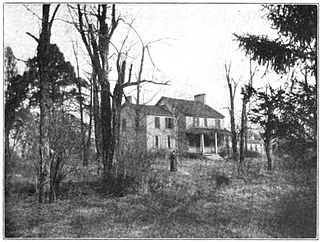
Israel Ludlow was a government surveyor who helped found Cincinnati, Dayton and Hamilton in southwest Ohio.
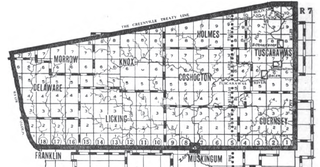
The United States Military District was a land tract in central Ohio that was established by the Congress to compensate veterans of the American Revolutionary War for their service. The tract contains 2,539,110 acres (10,275.4 km2) in Noble, Guernsey, Tuscarawas, Muskingum, Coshocton, Holmes, Licking, Knox, Franklin, Delaware, Morrow, and Marion Counties.

Miami University is a public research university in Oxford, Ohio. The university was founded in 1809, although classes were not held until 1824. Miami University is the second-oldest university in Ohio and the 10th oldest public university in the United States. Miami also has regional campuses in Hamilton, Middletown and West Chester, as well as the Dolibois European Center in Differdange, Luxembourg. The Carnegie Foundation classifies Miami University as a research university with a high research activity. It is affiliated with the University System of Ohio.
Van Cleve's wife birthed five children between 1801 and 1809, and died December 28, 1810. Van Cleve married Mary Tamplin March 10, 1812. He was Presbyterian by faith. [1] His son, John W. Van Cleve, was mayor of Dayton in the 1830s. [3]
Benjamin Van Cleve's Mother, Catherine Benham Van Cleve, was likely the sister of Northwest Territory politician Captain Robert Benham.[ citation needed ]




